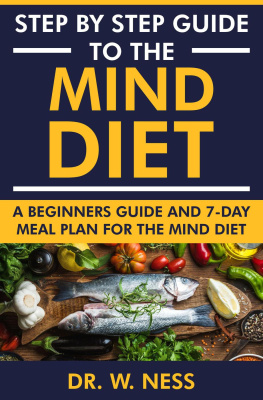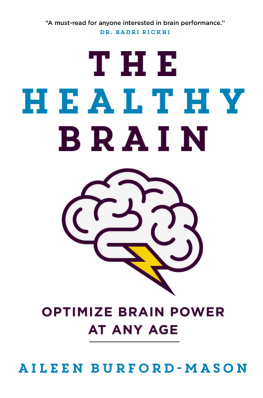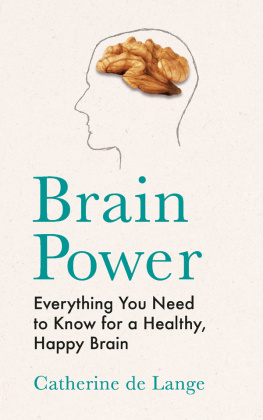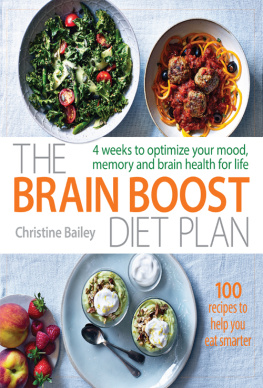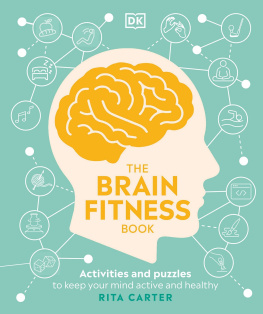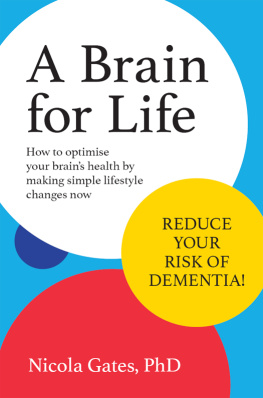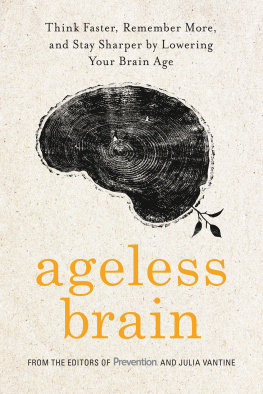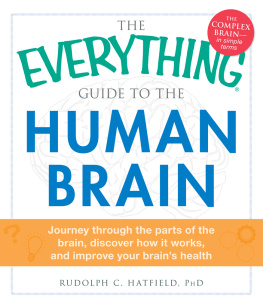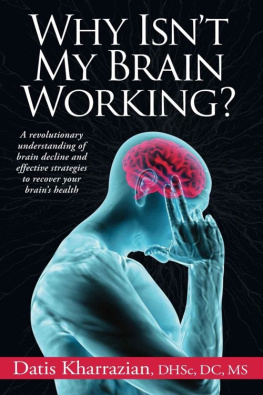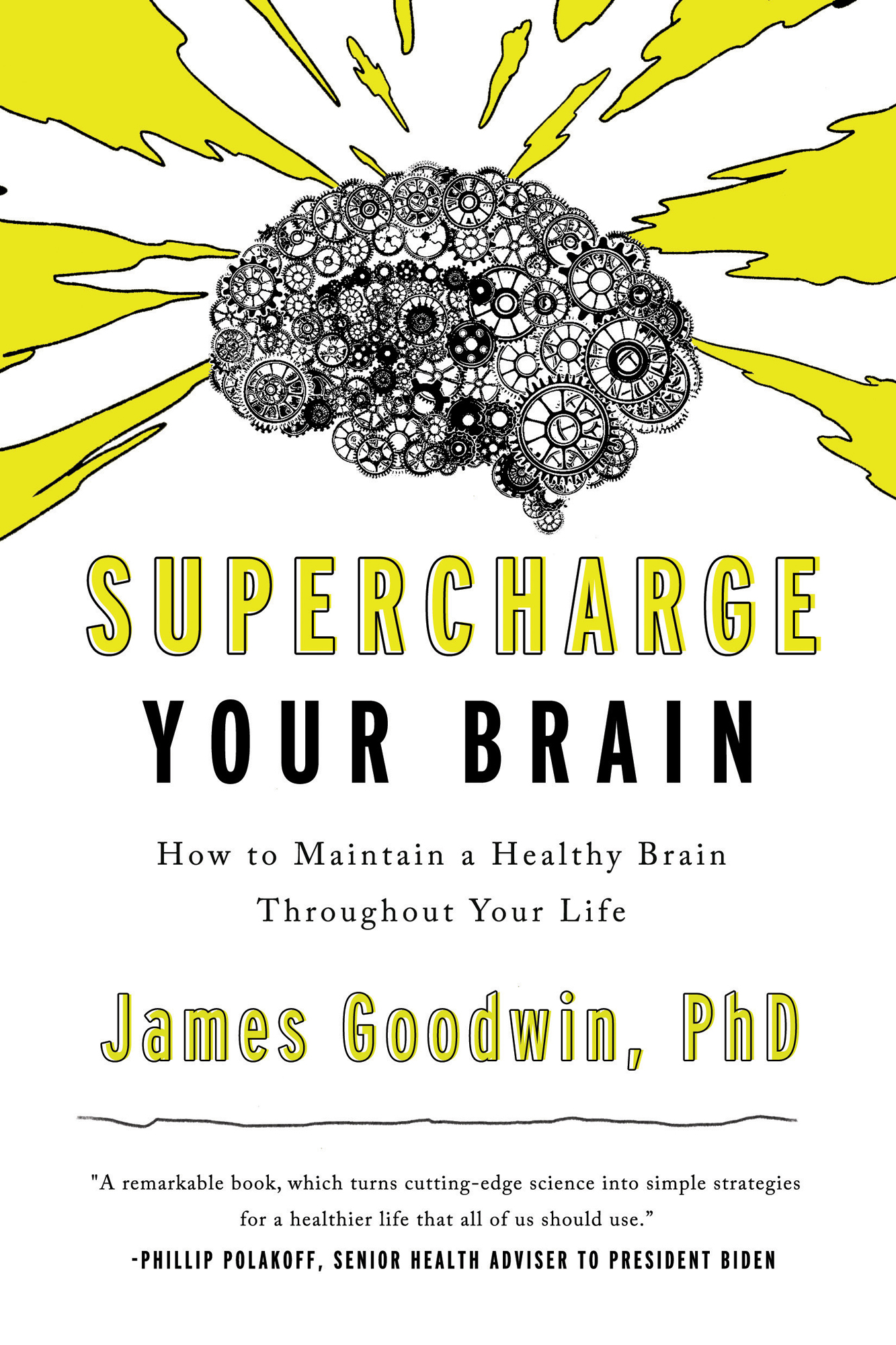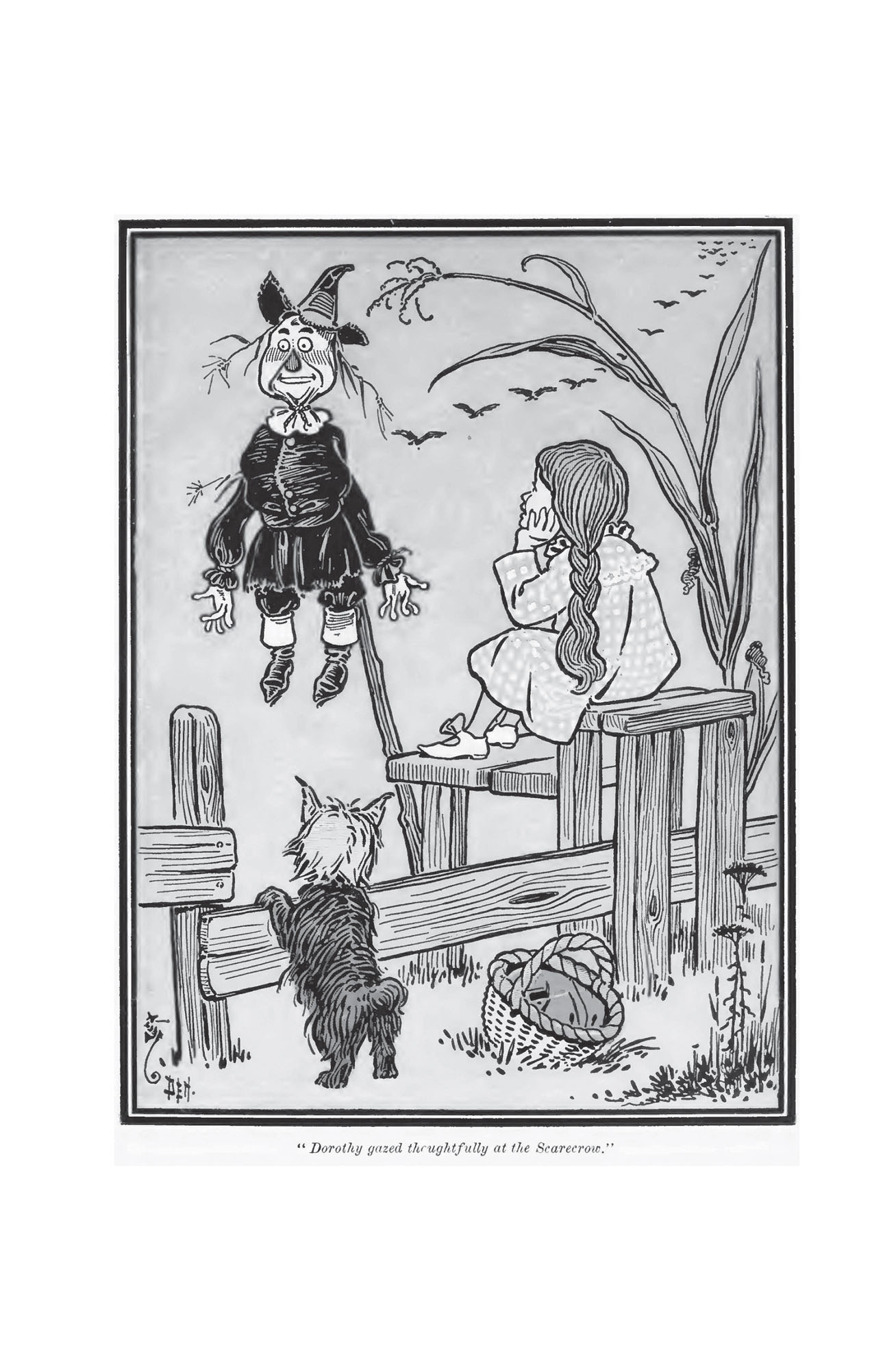Contents
Guide
Supercharge Your Brain
How to Maintain a Healthy Brain Throughout Your Life
James Goodwin, PhD
A remarkable book, which turns cutting-edge science into simple strategies for a healthier life that all of us should use.
Phillip Polakoff, Senior Health Adviser to President Biden
SUPERCHARGE YOUR BRAIN
Pegasus Books, Ltd.
148 West 37th Street, 13th Floor
New York, NY 10018
Copyright 2022 by James Goodwin, PhD
First Pegasus Books cloth edition January 2022
All rights reserved. No part of this book may be reproduced in whole or in part without written permission from the publisher, except by reviewers who may quote brief excerpts in connection with a review in a newspaper, magazine, or electronic publication; nor may any part of this book be reproduced, stored in a retrieval system, or transmitted in any form or by any means electronic, mechanical, photocopying, recording, or other, without written permission from the publisher.
ISBN: 978-1-64313-867-1
Ebook ISBN: 978-1-64313-868-8
Cover design by Faceout Studio, Amandahudson
Cover imagery by Getty and Stocksy Images
Distributed by Simon & Schuster
www.pegasusbooks.com
Nature is the source of all true knowledge. She has her own logic, her own laws, she has no effect without cause nor invention without necessity.
Leonardo da Vinci
INTRODUCTION The Yellow Brick Road
If you only have brains on your head you would be as good a man as any of them, and a better man than some of them. Brains are the only things worth having in this world, no matter whether one is a crow or a man.
The Wonderful Wizard of Oz
I T WAS 1900 WHEN L. Frank Baum wrote The Wonderful Wizard of Oz, and over the century and more since then some things havent changed. The Yellow Brick Road still captures an essence of the human experience. Doesnt the search for an improved life or an improved self resonate with us all? The Tin Man sought his heart along the road. The cowardly Lion, his courage. For the Scarecrow perhaps an unlikely hero for twenty-first-century science it was his brain.
It will be a long road for science, seeking an understanding of the brain and unlocking its secrets; but already the hows, whys and whats of the brain are unfolding on our path of discovery.
Arguably, this scientific journey started in 1848 in the US state of Vermont, where a railroad accident overturned fifteen hundred years of received wisdom about the brain. Phineas Gage was an affable and reliable man; a respected foreman on the construction of the track between Cavendish and Burlington. Distracted by an altercation between two of his men as he packed blasting powder into a granite hole, Gage allowed his concentration to lapse. The 6-foot tamping rod was blown through his head, entering under his left eye, exiting through his left cranium and landing some 30 feet away. Remarkably, Gage recovered. But Gage was no longer Gage. Once sober, industrious and temperate, now he was irascible, profane, unreliable, raging in fits of anger and abuse. Inconceivable as it seemed at the time, could the damage to the brain he had suffered be responsible for such a transformation in character, personality and temperament? Gages physician Martyn Harlow, in his famous paper on The passage of an iron bar through the head, published in the Journal of the Massachusetts Medical Society that same year, concluded that it was.
The case of Phineas Gage and the revolution in thinking it created was a pivotal moment in our understanding of the brain. No longer could organic substrate (the grey matter) be dismissed, as the ancients had done, as cranial offal. Over the following decades, as advances in empirical methods, imaging technology and hypothesis testing generated increasing numbers of scientific publications, the picture became clearer and we reached our modern view of the brain as an organ of immense complexity. With the false sciences of phrenology and mesmerism giving way to the real sciences of psychology, neuroscience and psychiatry, the brain ceased to be the ghost in the machine to the point where the axiom no consciousness in the absence of organic matter is now an established tenet of brain science.
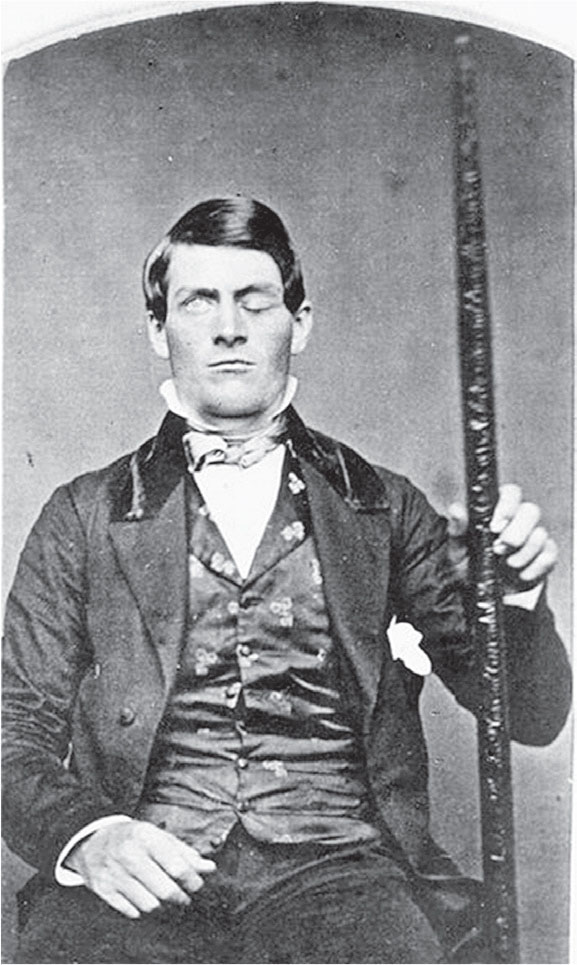
Phineas Gage holding the tamping iron that injured him
In 2000, one serendipitous event marked a huge leap forward. In July that year, two Scottish scientists were foraging about in the basement of the Moray House School of Education when they happened across a fifty-year-old treasure trove. It was the collected and archived results of one epic days work in 1947, when Scotland had done something never attempted by any other country: it tested the IQ of over seventy thousand children. This was nearly the entire nations population of 11-year-olds. And the unlikely reason for the investigation? It was thought that the working classes of Scotland were having too many children and were diluting the nations IQ (they werent). These unique data offered a glittering opportunity. Taking them as a starting point, researchers have been able to add a lifetimes worth of information about these people their individual medical records, occupations, health concerns, lifestyles and environmental influences: in short, to map out their lives and see how their thinking skills have changed over time. This priceless opportunity was turned into a scientific study. And revealed a recipe for brain power.
Called The Disconnected Mind, this sparkling study is now in its twelfth year. It has given us information about many of the changes we can expect to occur on the journey of ageing: who stays sharp and who doesnt; what role exercise and activity play; the effects of alcohol, smoking and sex; whether friendships matter; and the impact of stress, poverty and socio-economic class. This information is our path down the Yellow Brick Road, our journey to discovering the secrets of a healthy brain. Exploiting the participants long lives, the study is now in its third wave, measuring and testing about a thousand of the Lothian Birth Cohort of 1936, individuals now in their eighties.
There have been some stunning findings. For example, in a paper published in Nature in 2012, the study settled one of the most controversial issues in brain science: is it nature (genetics) or nurture (environment) that determines our IQ? It turns out that 50 per cent of our adult intelligence can be accounted for by IQ in childhood (at age 11). But what of other factors? It turns out that only one-quarter of the change in our intelligence our brain power over our adult life is determined by our DNA. Fully three-quarters of that change is determined by our environment and lifestyle factors in other words, by what we do.
What else is science revealing about the brain? The rate of progress in neuroscience and psychology is prodigious. A quick list of some of the biggest breakthroughs in just the past two years will show you why I say this:
- in vivo cell conversion, where gene therapy is used to reprogram the brains support cells (glia) into working brain cells;


